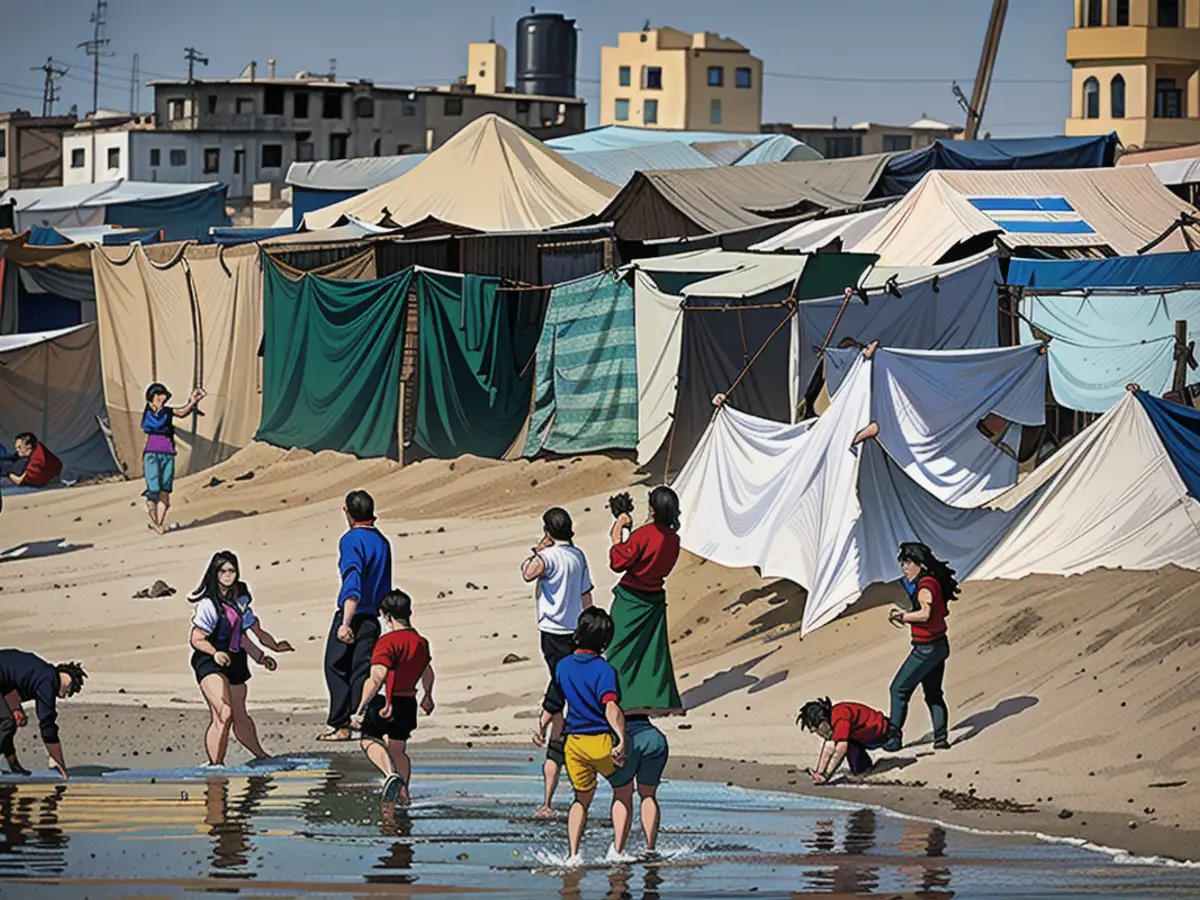The intensifying heat wave in Gaza increases the humanitarian crisis there, according to recent findings linked to climate change.
Gaza, along with several other areas on the Asian continent, endured heat waves last month during the warmest April on record. As per the World Weather Attribution initiative (WWA), climate change made these heatwaves more intense and likely.
The heat waves were categorized into three regions: West Asia, the Philippines, and South and Southeast Asia.
In West Asia, particularly the Palestinian territories, Syria, Lebanon, Israel, and Jordan, temperatures surged well above 40°C (104°F). The WWA report determined that climate change enhanced the heat in this area around five times more likely and increased the temperature by nearly 1.7°C more than before human exploitation of fossil fuels.
The scorching heat had a severe impact on the 1.7 million displaced people in Gaza already battling insufficient water supply and inadequate healthcare facilities. The oppressive heat had little respite for those living in makeshift tents and shelters covered with plastic sheets. Three deaths, including two children, were reportedly linked to the heat.
In the Philippines, extreme temperatures reaching over 42°C compelled the closure of several schools. The analysis established that human-induced global warming played a pivotal role in the severe heat, making it impossible to occur without its influence.
The investigators calculated the influence of climate change on the heat by comparing the current climate, which is approximately 1.2°C warmer than before human reliance on fossil fuels' consumption, with past climates.
"From Gaza to Delhi to Manila, people suffered and died when April temperatures soared in Asia," said Friederike Otto, a senior lecturer in climate science at the Grantham Institute for Climate Change and the Environment and one of the authors, describing the dire situation. "Heat waves have always existed. Still, the additional heat, resulting from oil, gas, and coal emissions, represents deaths for numerous people."
The scientists also, examined the impact of El Niño, a natural weather pattern causing global shifts. They discovered no effect in West Asia's heat but significantly impacted the intensity of heat in the Philippines, raising temperatures by 0.2°C. However, while El Niño contributed, the magnitude of the climate crisis was more significant, resulting in about 1.2°C more warming.
In today's warmer climate, heatwaves like those experienced in Gaza and West Asia, as well as the Philippines, can be anticipated around once in a decade, the report revealed. As climate change progresses, the frequency might increase.
If the average temperature globally surpasses 2°C above its pre-industrial mark, predicted to happen in the 2040s or 2050s if the world doesn't take rapid action to decarbonize, similar heatwaves could occur, once every five years in West Asia and more frequently in the Philippines.

Southeast Asia's Record Heat
The WWA analysis also scrutinized parts of South and Southeast Asia, including Myanmar, Laos, Vietnam, India, Bangladesh, and Thailand, all of which broke records for the hottest April day this year.
Myanmar experienced record-breaking heats of up to 46°C (115°F), while India's temperatures soared to 46°C. In Bangladesh and Thailand, April temperatures were just as intense.
The WWA research revealed that climate change strongly influenced this region, with a 45 times higher probability of extreme heat waves and 0.85°C higher temperatures than before human fossil fuel use.
The investigators employed a less sophisticated approach in this study, focusing solely on climate data, as this portion of Asia partially overlapped with two previously conducted analyses of extreme heat events in 2022 and 2023, both asserting a significant role for climate change.
The numbers in the report are crucial, as they demonstrate that climate change is a life-changing factor when it comes to extreme heat, Otto remarkeds. However, these numbers alone don't capture the impact's severity, which depends on people's vulnerability and exposure.
Daily temperatures above 40°C (104°F) were "particularly troublesome for outdoor workers, people in makeshift housing, and people residing in refugee camps," Otto explained.
Asia is home to the world's most rapidly expanding metropolises. According to Carolina Pereira Marghidan, a climate risk consultant at the Red Cross Red Crescent Climate Centre, this has resulted in uncontrolled development. "Many cities have witnessed extreme loss of green spaces," said Marghidan on a press call. The effects of extreme heat are consequently more devastating for city-dwellers already exposed to urban heat island phenomena.
"We need to take unparalleled, rapid action to reduce emissions if we don't want more suffering from heatwaves in Asia," said Mariam Zachariah, a researcher at the Grantham Institute, urging urgent action.

Read also:
- This will change in December
- Dikes withstand water masses so far - Scholz holds out the prospect of help
- Fireworks and parties ring in 2024 - turn of the year overshadowed by conflicts
- Attacks on ships in the Red Sea: shipping companies avoid important trade route
The world is witnessing an increase in extreme heat waves due to climate change, affecting various regions across the globe.Gaza, one such affected area, is experiencing intensified heat waves, exacerbating the already critical humanitarian situation.
Source: edition.cnn.com








